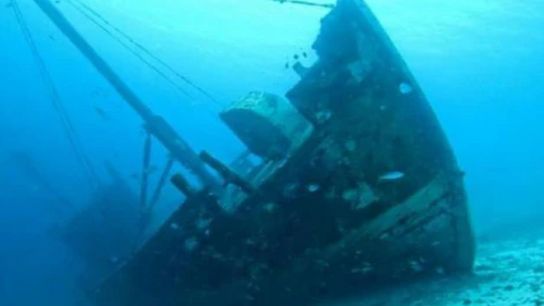The Spanish galleon Nuestra Señora de Atocha, often simply referred to as the Atocha, is one of the most famous shipwrecks in maritime history. Built in Havana, Cuba, the Atocha was part of the Spanish treasure fleet, or "flota de Indias," designed to transport precious cargo from the New World back to Spain. Commissioned in 1620, the Atocha was a heavily armed vessel, equipped with 20 bronze cannons to defend against pirates and enemy ships, reflecting the immense value of her cargo.
On September 6, 1622, the Atocha set sail from Havana, leading a convoy of ships bound for Spain. The fleet was loaded with an enormous quantity of treasure: gold and silver ingots, coins, precious gemstones, pearls, and other valuable goods mined from the Spanish colonies in the Americas. The Atocha herself carried an estimated 47 tons of silver, 27 kilograms of gold, and 20,000 precious gems, among other treasures. The total estimated value of the cargo is believed to have been around 400 million dollars in today's terms.
The journey started with favorable conditions, but as the fleet approached the Florida Straits, it encountered a powerful hurricane. On September 6, just one day after setting sail, the fleet was hit by the full force of the storm. The Atocha, along with several other ships, was driven off course. The galleon struggled against the fierce winds and towering waves but ultimately succumbed to the storm. On September 7, 1622, the Atocha was driven onto a reef and sank near what is now the Marquesas Keys, about 35 miles west of Key West, Florida.
The sinking of the Atocha resulted in a significant loss of life. Out of the 265 people on board, only five survived—three sailors and two slaves, who managed to cling to the floating debris until they were rescued. The rest, including the ship's captain, died in the disaster. The survivors were able to report the approximate location of the wreck, but initial salvage efforts were thwarted by bad weather, the shifting sands of the seabed, and the complexities of underwater recovery at that time.
Despite numerous attempts by the Spanish over the following decades to recover the lost treasure, the wreck of the Atocha remained elusive. The Spanish crown sent numerous expeditions to the site, but each effort ended in failure. The location of the treasure became a matter of legend and speculation, captivating the imaginations of treasure hunters for centuries.
In the 20th century, the search for the Atocha was revived by modern treasure hunters. One of the most persistent and successful was Mel Fisher, an American treasure hunter who dedicated more than 16 years of his life to finding the galleon. Fisher and his team employed innovative diving and recovery techniques, including the use of magnetometers to detect metal objects buried under the seabed. They faced numerous challenges, including legal battles with the state of Florida and the federal government over the rights to the recovered treasure.
On July 20, 1985, Fisher's perseverance paid off. His team discovered the main hull of the Atocha, along with a significant portion of its treasure. The find included 40 tons of silver and gold, Colombian emeralds, Peruvian silver coins, and various artifacts, including navigational instruments and weapons. The discovery was one of the most significant underwater archaeological finds of the 20th century and confirmed the legends of the Atocha's immense wealth.
The recovered treasure was meticulously cataloged and conserved, providing valuable insights into the maritime history and trade practices of the 17th century. The artifacts and coins offered a glimpse into the economic and cultural exchanges between Europe and the Americas. Many items were sold to private collectors and museums, while others were retained by Fisher's family and displayed in their museum in Key West.
The story of the Atocha continues to fascinate historians, archaeologists, and treasure hunters. It highlights the perils faced by maritime explorers during the Age of Discovery and the lengths to which individuals will go to recover lost history. The Atocha's treasure, both material and informational, has greatly enriched our understanding of the period and remains a symbol of human determination and curiosity.
In the years following the discovery, additional salvage operations continued to uncover more artifacts and treasures from the wreck site. Each find contributed further to the historical narrative, revealing more about the daily lives of those aboard and the broader context of 17th-century seafaring.
The Atocha's legacy also extends to the legal and ethical dimensions of underwater archaeology. The battle over the rights to the treasure highlighted the need for clearer regulations regarding the ownership and preservation of submerged cultural heritage. It sparked debates about the balance between commercial interests and the protection of historical artifacts for public benefit.
Today, the tale of the Atocha is celebrated in popular culture and serves as a testament to the enduring allure of treasure hunting. It is a reminder of the risks taken by explorers and the enduring mystery of the sea, where countless other shipwrecks, known and unknown, lie waiting to be discovered. The Atocha’s story is not just about the loss and recovery of treasure but also about the human spirit’s quest for knowledge and adventure.
As for Mel Fisher, he became a legend in his own right, often quoted for his optimistic motto, "Today's the day!" His relentless pursuit and eventual success have inspired a new generation of treasure hunters and explorers, keeping the spirit of adventure alive in the modern age. The Atocha stands as a historical beacon, marking the intersection of danger, wealth, and human endeavor in the uncharted waters of the past.


